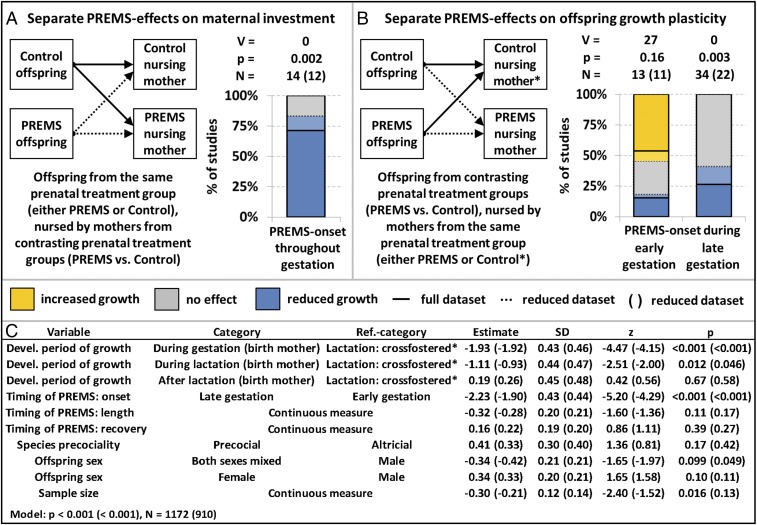Fig. 3.
Separating the effects of maternal investment and offspring growth plasticity: How cross-fostering and artificial nursing influences PREMS effects on offspring growth during lactation. Percentage of studies reporting a higher (orange), equal (gray), or lower (blue) growth rate in offspring (A) nursed by or (B) born to PREMS mothers (compared with control mothers). Early/late gestation means first/second half of gestation. (A) Pure maternal investment effect (Fig. 1A blue path, Fig. 1C). Offspring of the same prenatal treatment group showed a significantly reduced growth rate during lactation if nursed by a PREMS compared with a control mother. (B and C) Pure effect of offspring growth plasticity (Fig. 1A orange path, Fig. 1B). Offspring from different prenatal treatment groups were equally nursed by mothers that did not differ from each other in their prenatal treatments. The resulting PREMS effects on offspring growth during lactation largely conform to predictions for adaptive growth plasticity in the absence of maternal investment effects and are similar to PREMS effects on postindependence growth (see Fig. 2 for comparison). A cumulative Logit link mixed model (CLMM) (random factors: species, within study repeated measures) revealed that compared with PREMS effects in offspring naturally nursed by their birth mothers, the exclusion of differences in maternal investment during lactation (reference category “lactation: cross-fostered”) resulted in increased growth rates, i.e., a significant shift from PREMS effects predicted for lactation to effects predicted for postindependence. Length/recovery means period between onset and end of PREMS/between end of PREMS and parturition (both in percent of gestation period). *Control nursing includes both nursing by control females and artificial nursing.

